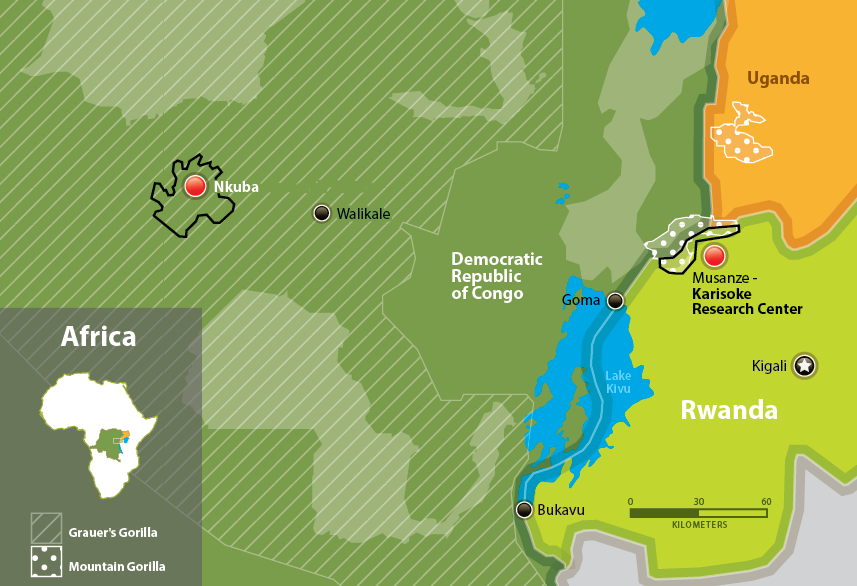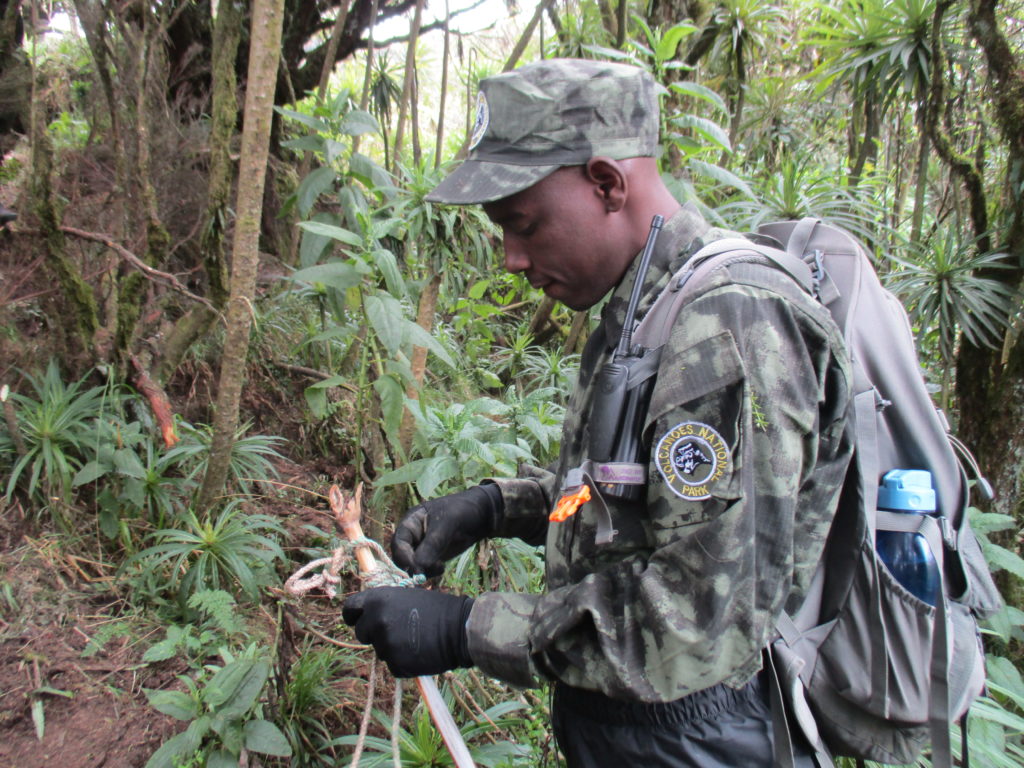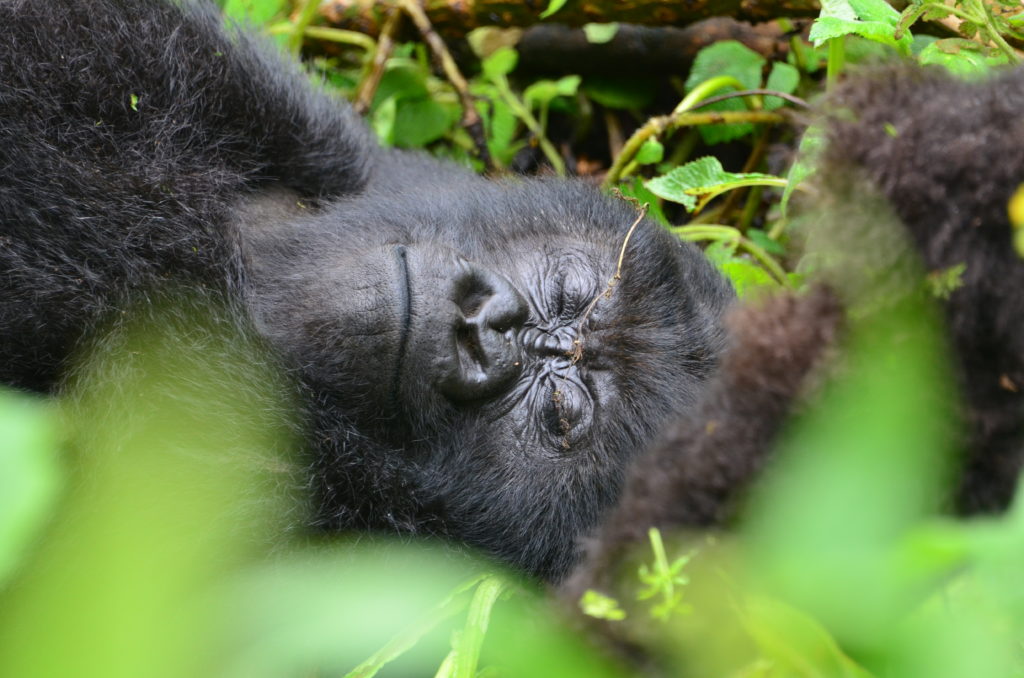Question 1
Where do gorillas live?
Gorillas live in tropical and subtropical forests in central Africa. The Fossey Fund studies and protects both mountain gorillas and Grauer’s gorillas. Mountain gorillas can be found in Rwanda, the Democratic Republic of Congo, and Uganda. Grauer’s gorillas are found only in the Democratic Republic of Congo. To learn more about where we work go here!

Question 2
How do you manage with poachers?
The Fossey Fund has dedicated anti-poaching teams. These teams remove snares and guard against other illegal activities in the forest as part of our effort to protect wild gorillas. While most snares and other poaching traps are intended for antelope or other small animals, gorillas can still be seriously injured or killed by them.

Question 3
Are fights for dominance frequent? What happens to the defeated male gorilla?
Despite the size and power of silverbacks, fights for dominance are actually not very frequent. Aggression costs a lot of calories, and gorillas aren’t always willing to expend that much energy. In order to gain females, silverbacks don’t always need to display aggressive behaviors, as females may choose to transfer groups. However, when males do fight, the defeated male will often leave the group. One famous exception is the silverback Titus, who allowed Beetsme, the silverback he challenged, to stay in the group as a lower-ranking male.

Question 4
What is the daily life of a gorilla like?
On a typical day, gorillas don’t actually do very much! The majority of a gorilla’s day will consist of resting, traveling, and foraging for food. On average, they only move about one mile per day, so even traveling doesn’t involve too much activity. Resting, traveling, and foraging combined make up around 95% of the gorilla’s day. The other part of their day may be spent participating in social behaviors such as playing or grooming.

Question 5
How many individuals remain of gorillas in general and each species / subspecies?
Eastern Gorilla
Mountain gorillas
There are just over 1,000 left. Their status was recently improved — reclassified from critically endangered to endangered. This is because they have the only rising population of any gorilla subspecies, thanks to the dedicated daily protection of the Fossey Fund and the Rwandan government.
Grauer’s (eastern lowland) gorillas
There are around 3,500. This gorilla population is critically endangered and is the most rapidly declining of all gorilla species.
Western Gorillas
Western lowland gorillas
While there are about 300,000 in the wild, the population is decreasing rapidly and they are considered critically endangered. Zoos, in particular, are doing important conservation work to help save this species.
Cross River gorillas
Cross River gorillas have a population of only 200-300 individuals. Not much is known about this species because their habitat is difficult to access, but we know enough to classify them as critically endangered. They are threatened by human encroachment and poaching.
To see the endangered status of your other favorite animals, visit the International Union for Conservation of Nature’s Red List here.






